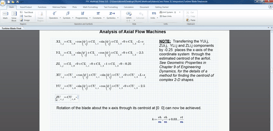 As a modern CAD user, you’re no doubt used to working in teams that are separated. You might be divided by the stage of the design process that you work on, the office that you work in or even the country that you are located in.
As a modern CAD user, you’re no doubt used to working in teams that are separated. You might be divided by the stage of the design process that you work on, the office that you work in or even the country that you are located in.
To protect and preserve the design intent across these divides is a real challenge. Being able to effectively record the ‘what’, ‘why’ and ‘how’ of the design is essential, if you want to keep communications as smooth as possible.
To be able to turn our concept design into a successful product, CAD engineers have to be able to work within a structured framework that manages the flow of all of the essential engineering information throughout each and every stage of the design lifecycle.
To preserve the integrity of the design intent, information must be easy to understand, capture and exchange.
Using the universal language of mathematics, PTC Mathcad is able to remove ambiguity and makes documenting design choices easier. It works by creating an electronic engineering notebook, which everyone involved in the product development can use and refer to when working on their individual stage of the process.
Best of all, by having the documentation available with the geometry, CAD engineers can easily find and understand the detail of the design intent, eliminating potential design errors, which preserving essential knowledge for all engineers that are involved in the process.
Additionally, PTC Mathcad can automatically calculate and drive parameters to update the design in the CAD system and extract and analyse existing parameters. All of this makes design reviews easier, by providing direct access to design intent inside the electronic engineering notebook.
With PTC Mathcad, engineering knowledge and design intent can be captured and communicated across all stages of the design lifecycle. For CAD engineers, this means that they can keep design details where they belong – linked to the model in the PTC Mathcad electronic engineering notebook.
